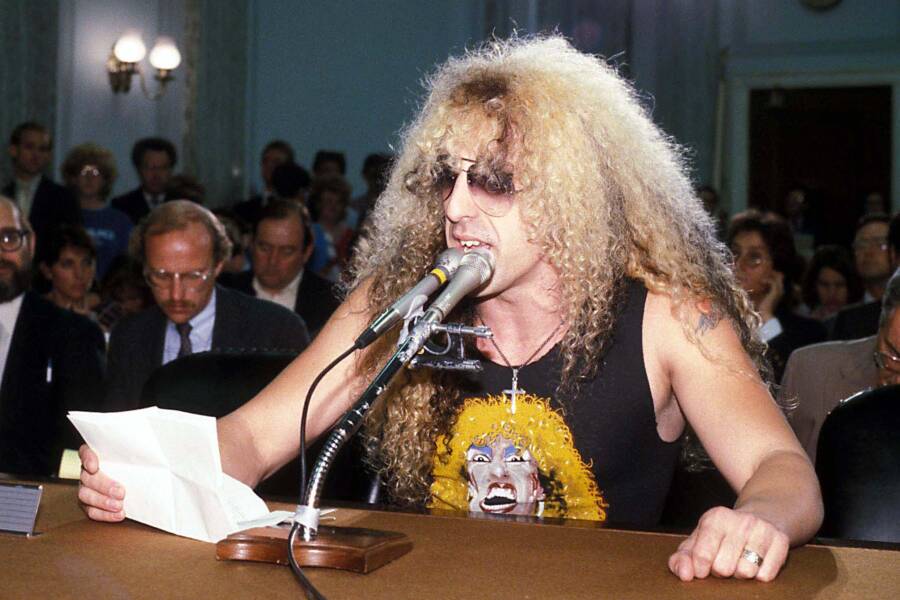
This was all before the internet and it was a pretty robust whisper campaign of sorts putting about an adolescent fantasy trope embellished with fear porn.
Throw in an underground drug culture that was ascendent ,and we had a real conspiracy trope that could be nasty. Then have the social milieu of our school system and away you go.
These were not idle rumors but accusations of real criminal activity that the police needed to take seriously even when all witnesses recanted when touched.
What Was The Satanic Panic? Inside The Mass Hysteria That Swept America In The 1980s And ’90s
https://allthatsinteresting.com/satanic-panic
Beginning in the early 1980s, wild theories about ritual sexual abuse, widespread occultism, and Devil worship dominated news headlines and created a moral panic that led to unfounded accusations and even wrongful imprisonments.
ZUMA Press, Inc. / Alamy Stock PhotoDee Snider of the heavy metal band Twisted Sister testifying at a Senate hearing about rock music lyrics in 1985, during the height of the Satanic Panic.
From the outside, McMartin Preschool in Manhattan Beach, California, looked perfectly innocent. Its front yard was filled with toys like rocking horses, and the school name was printed in a blocky, friendly font reminiscent of the Wild West. But in the 1980s, McMartin Preschool was the center of an alarming nationwide phenomenon known as the Satanic Panic.
In 1983, a mother — who was later diagnosed with paranoid schizophrenia — accused teachers at the school of abusing her son. Other allegations soon followed, each more shocking than the last. The teachers were not only accused of molesting their young students but also flying around in the air, sacrificing infants, and brutally killing animals before the children’s eyes.
Far from being an isolated case, McMartin Preschool was just one of several daycare centers that were caught up in Satanic Panic — which also extended to alarm over board games, songs, and even corporations.
So, how did Satanic Panic start? How did it manifest itself in American society? And did the widespread hysteria of the 1980s really ever end?
The First Seeds Of Satanic Panic
Joan Didion famously remarked that the 1960s ended when Charles Manson’s followers murdered actress Sharon Tate and four others in August 1969. One of the killers, Tex Watson, purportedly sneered: “I’m the Devil, and I’ve come to do the Devil’s work.”
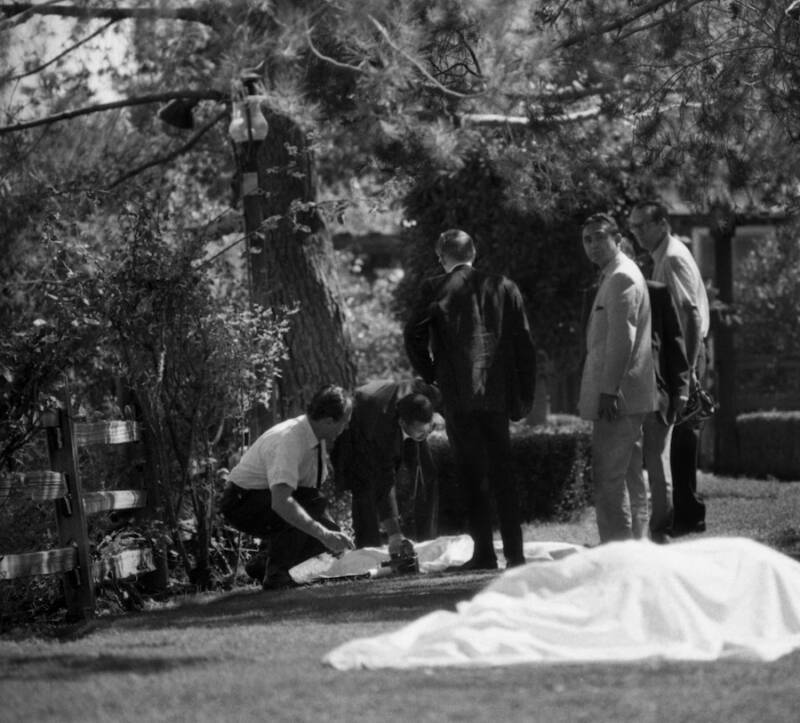
Bettmann/Getty ImagesPolice crouch over body bags in the aftermath of the Manson murders, which struck many as an act of pure evil.
Arguably, this shocking display of evil also marked the first stirrings of the Satanic Panic.
Indeed, Americans in the 1970s and ’80s seemed to suspect that the Devil was lurking everywhere. In 1978, McDonald’s was forced to publicly announce that its founder, Ray Kroc, did not financially support the Church of Satan. In the early 1980s, Procter & Gamble became the target of rumors that its 13-starred logo — a reference to the 13 original colonies — was the symbol of the Devil. Horror films seemed to reflect this anxiety, and The Exorcist (1973), The Omen (1976), and The Amityville Horror (1979) all dealt with demonic themes.
Procter & GambleSome saw the Devil in the former Procter & Gamble logo, though the company insisted there was nothing Satanic about it.
The roots of this uneasiness are difficult to pin down definitively, but they may have stemmed from changes in American society. More women were working, which meant that teenagers were unsupervised, and young children were increasingly going to daycare. The peaceful, dreamy music of the 1960s had ceded the airwaves to rock and heavy metal, and trust in institutions had plummeted after Watergate and the Vietnam War.
Then, in 1980, Satanic Panic started in earnest with the publication of a book called Michelle Remembers.
‘Michelle Remembers’: Satanic Orgies, Recovered Memories, And A Warning
Michelle Remembers was released in 1980, the day after Halloween. Although it presented itself as a nonfiction account written by a therapist, Lawrence Pazder, and his patient, Michelle Smith, it read like a horror story.
The book followed Smith’s therapeutic sessions with Pazder, who she turned to for help after a miscarriage. Pazder saw Smith for two years and practiced a discredited form of therapy known as “recovered memory therapy.” Before long, Smith’s childhood “memories” suddenly were “recovered.”

Wikimedia CommonsA first edition of Michelle Remembers, the 1980 book that helped kick off the Satanic Panic.
The book flew off the shelves, and Pazder and Smith started appearing on television. As shocked audiences tuned in, Smith recounted the horrific things that had happened to her in her childhood.
“Basically, what I remember was a 14-month period of my life at age five where I was given to a group of people whom at first I wasn’t aware of what they were doing, other than, to a child, they were adults doing things that I couldn’t understand and that frightened me,” Smith explained in one television interview, according to a 2023 report in the Independent.
Smith claimed that her mother gave her away to a Satanic cult, where she was held captive, tortured, and abused. Smith said that she witnessed a Satanic orgy in which one of the members was murdered, that she was buried alive, and that she was forced to kill kittens. On the 81st day, she said, the Devil appeared after the Satanists performed a ritualistic ceremony.
Then, Smith says she was released — with her memories locked away.
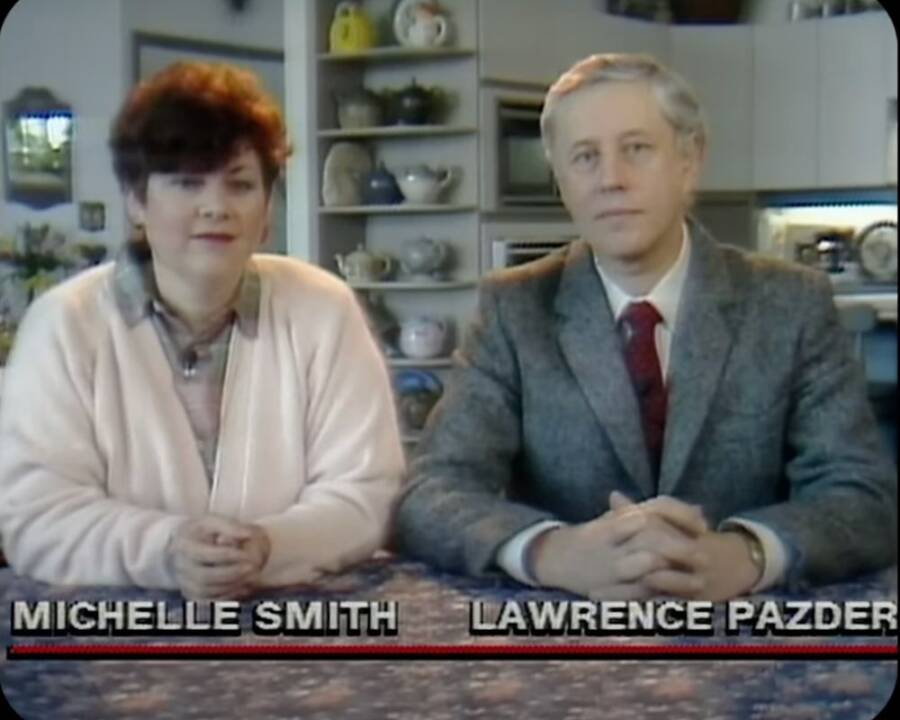
CBC News/YouTubeMichelle Smith and Lawrence Pazder shortly after the release of Michelle Remembers. They later married.
“I think, today, it’s very, very wise to take a good hard look at where you place your children,” Smith remarked, “into whose care you place your child.”
Some people started doing exactly that. And the Satanic Panic reached a new fever pitch.
The Satanic Panic Reaches Preschools Across The Country
Satanic Panic went from a simmer to a full-on boil in the summer of 1983. Then, a woman named Judy Johnson told the police that her two-year-old son had been sodomized at his daycare, McMartin Preschool in Manhattan Beach, California. She believed that teacher Ray Buckey was responsible.
In a letter to the district attorney, as reported by The New York Times in 1990, Johnson went even further, recounting an alarming incident that included a “goatman,” a “ritual-type atmosphere,” and a church where another staff member “drilled a child under the arms,” and “Ray flew in the air.”
To investigate, police sent a letter to 200 parents of both current and former children at the school seeking to learn more.

UMKC School Of LawSatanic Panic reached a fever pitch at McMartin Preschool in the 1980s.
“Please question your child to see if he or she has been a witness to any crime or if he or she has been a victim,” the letter stated before ominously adding: “Our investigation indicates that possible criminal acts include: oral sex, fondling of genitals, buttock or chest area, and sodomy, possibly committed under the pretense of ‘taking the child’s temperature.'”
The letter — which may have influenced the investigation from the onset — triggered widespread panic among parents. But they were ill-equipped to question the children, and the professional investigators were no better.
They asked the children leading questions like, “Can you remember the naked pictures?” and told them that their classmates had already shared “yucky secrets.” One child was called a “scaredy cat” for denying abuse, and another admitted decades later that he’d lied because of pressure.
According to The New York Times, most children initially denied any wrongdoing by the school. But by the end of the investigation, the majority of them described witnessing horrific abuse.
Their accounts were shocking. The children described teachers beating a horse to death with a baseball bat, squeezing a parakeet to death, sacrificing a baby in a church and making the children drink the blood, secret tunnels beneath the school, and a game called “Lookout” where children would stand guard while teachers molested their classmates.
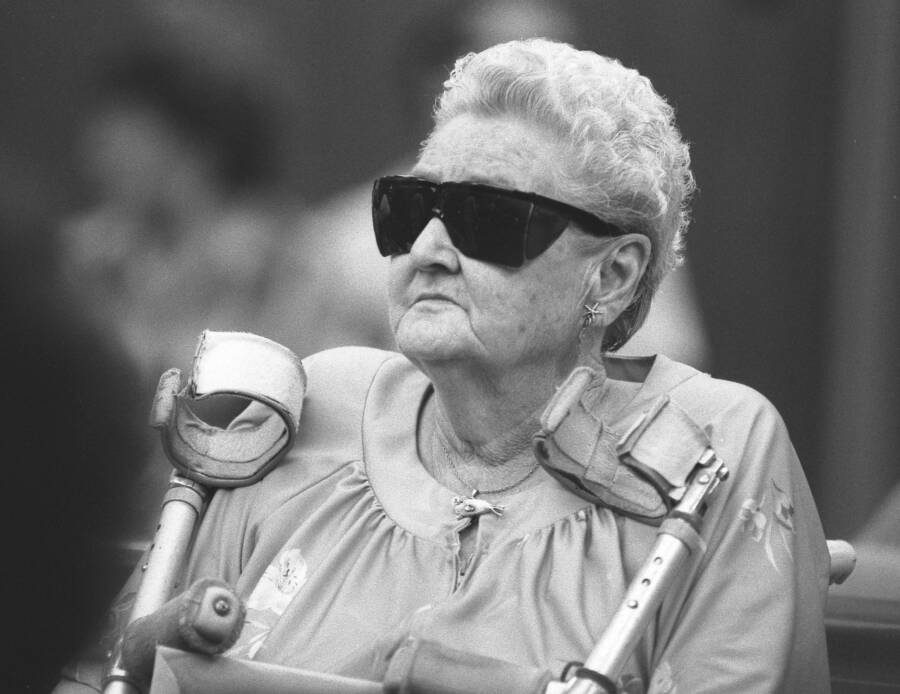
Los Angeles Times Photographic Collection/UCLA LibraryVirginia McMartin, the founder of McMartin Preschool, during her trial in 1984.
In the end, after years of trials, all charges against Ray Buckey and the other teachers were dismissed. However, McMartin was just one preschool where educators were accused of grievous acts against their students. Others also became casualties of the Satanic Panic, which spread fear about terrible things happening in innocuous places.
But preschools were not the only places influenced by Satanic Panic, which continued throughout the 1980s and ’90s.
From Backward Songs To Board Games: The Final Days Of Satanic Panic
Satanic Panic continued to manifest itself in different ways throughout the 1980s and ’90s. Then, people claimed to see the “Devil” in songs, board games, and murders.
Though the idea of finding hidden messages in songs had been around for decades, it took on a new significance amid the Satanic Panic. In 1985, two young men, Raymond Belknap and James Vance, agreed to a suicide pact that left Belknap dead and Vance with serious injuries. Vance’s parents later sued the band Judas Priest because their songs allegedly contained hidden messages like “do it” and “let’s be dead.” (The band was found not liable.)
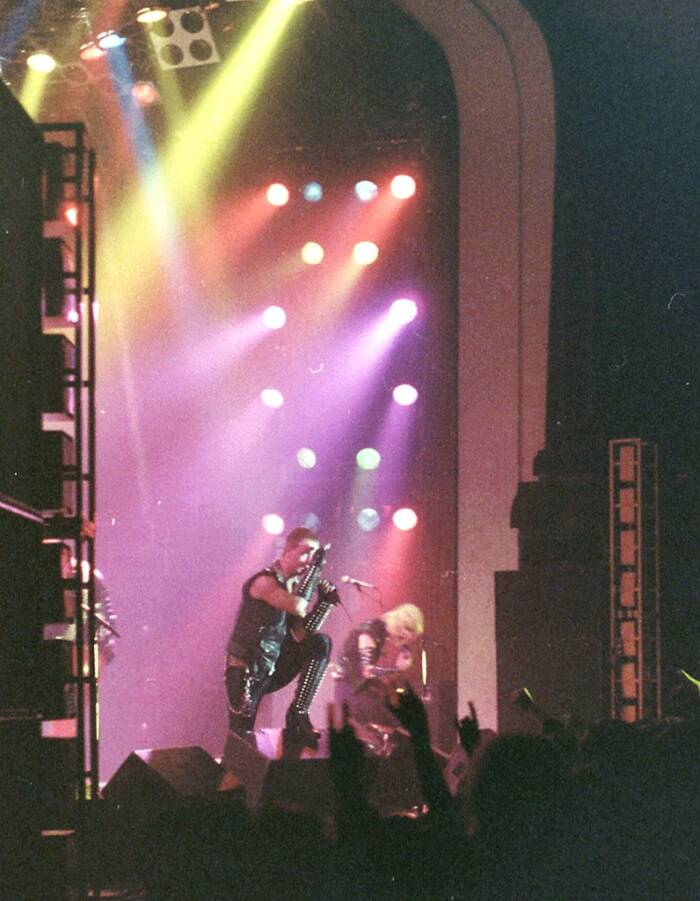
Watt Dabney/Wikimedia CommonsJudas Priest performing in 1981.
Games like Dungeons and Dragons, which contained magic spells and monsters, also faced accusations of Satanism. A grieving mother whose son had died by suicide formed the organization “Bothered About Dungeons And Dragons” or “BADD” in 1983. She claimed that the game encouraged “Devil worship” and was replete with “demonology,” “satanic type rituals,” and more.
Satanic Panic was also used to justify horrendous crimes, like the murders of three eight-year-old boys in 1993. The prosecution claimed that their alleged killers, teenagers Damien Echols, Jessie Misskelley Jr., and Jason Baldwin — the so-called West Memphis Three — had killed the boys as part of a Satanic ritual. They were convicted but later freed.
Like all things, the Satanic Panic eventually started to ebb. But did it ever truly end?
Today, an equivalent might be QAnon, a group that believes in secret cabals that torture children and conduct Satanic rituals. Just like with the Satanic Panic, adherents to QAnon believe that they are protecting children from unspeakable — and near invisible — evils.
Perhaps both movements reflect an ancient fear: That monsters lurk in the dark, that our loved ones are vulnerable to their influence, and that evil can make itself known in even the most innocent of places.
No comments:
Post a Comment